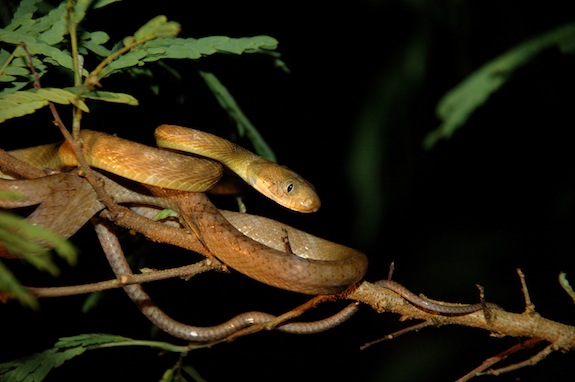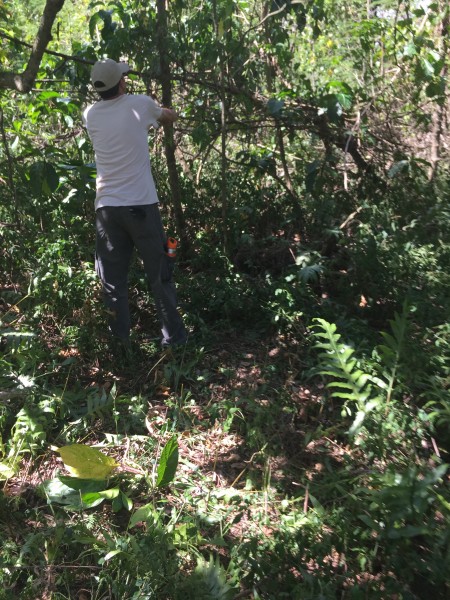Houston Zoo Staff Saving Wildlife in the Mariana Islands (part II)!
This blog was written by Steve Howard, a member of the Zoo’s Bird Department. Steve Howard received a Staff Conservation Fund grant from his coworkers at the Houston Zoo to carry out a wildlife-saving project for birds in the Mariana Islands (a chain of islands in the western North Pacific Ocean). We will be posting a series of blogs as Steve documents his work overseas.
Tinian, Thursday April 21st.
This was the first day of field work. Today we cleared underbrush in the forest to make trails, along which we will set up our mist nets. So why are we here trapping birds? The short answer is the brown tree snake. This is an aggressive predatory snake that loves birds. After its accidental introduction to Guam, it wiped out nearly all native birds on the island. There are no snakes on the island of Tinian at this time, but it could happen in the future that the brown tree snake makes it here, and that would be disastrous for the local avifauna (birds). So birds are trapped, and then moved to another island that doesn’t have a population of brown tree snakes. Then, should the snake make it to Tinian in the future, at least some birds will be safe on another island.

To do this though, we have to get the birds! So that brings us back to today’s job – clearing a path and space in the forest to put up nets. The nets are 36 feet long, and are stretched between polls (telescoping plastic poles). When open they are about 10 feet from top to bottom. So space must be cleared to stretch them out, with enough clear vertical space to raise the nets up. This picture shows us clearing a net lane prior to putting up the poles and net.

Tomorrow – more work in the forest! Then we’ll open the nets and see what we catch!
To find out more about our Houston Zoo staff saving wildlife, click here.
